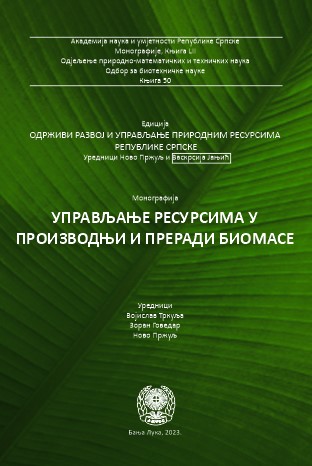Biomass production from energy and fast growing plants
DOI:
https://doi.org/10.7251/EORU2306219IKeywords:
Bioenergy crops, biomass and biofuels, fossilium fuels, Spanish reed, miscanthus, marginal soilsAbstract
The agro-ecological and soil conditions of the Republic of Srpska provide the possibility of growing many agro-energy crops, which represent a great chance for agricultural producers who own lands with less favorable physical and chemical properties. The production and spreading of bioenergy crops have been exposed to sharply critics and suspicion for their economic justification. The basic problem is the identification of the most suitable biomass and the projecting of the process by which the energy from it should be extracted. Using the produced biomass would significantly reduce the consumption of fossil fuels, which Serbia and Republic of Srpska have in limited quantities. The great genetic potential of fertility has classified miscanthus in the group of the most important bio-energetic crops. By introducing these predominantly perennial plants into production, with slightly higher investments in the year of establishment and significantly less in the years of use, uncultivated agricultural land could be used and also the most non-agricultural areas and deposoles could be bring to purpose. Fresh above-ground biomass of miscanthus and Spanish reed plants, mowed in the panicle phenophase, is used to obtain biogas, while dry baled stalks without leaves are burned directly in cauldron plants (for example in thermal power plants) or used for the production of briquettes. The advantage of using miscanthus and Spanish reed for bio-fuel production compared to other field plants is their higher yield and higher amount of fuel obtained per unit area and, on the other hand, quantity of world food production is not reduced, because this species participates little in world needs for food of plant origin.
